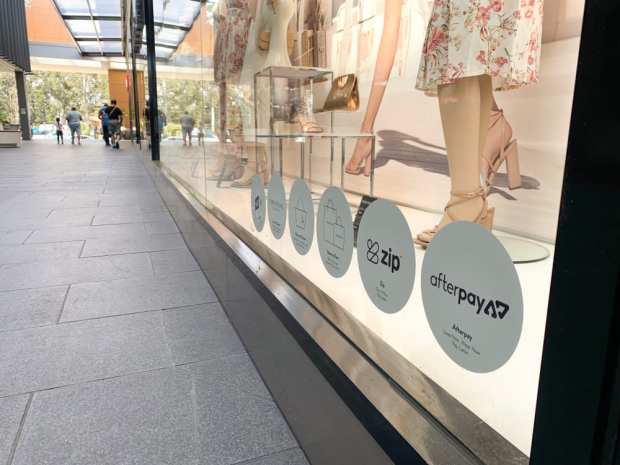In Search Of Consumer Spending’s New Normal

If pre-season estimates were correct, this holiday season was worth $1 trillion in the United States alone. And even if it doesn’t quite make it over the trillion-dollar milestone, consumer spending will certainly get within striking distance – which attests to the fact that in the U.S. and around the world, people were shopping hard during the holidays.
And while consumers were certainly spending at a more than respectable clip during holiday 2019, the ways they were spending began showing some notable changes, particularly among younger shoppers. During the Black Friday and Cyber Monday shopping events and beyond, consumers were increasingly turning to buy now, pay later (BNPL) solutions in the U.S. and around the world.
Singapore-based Kredivo ended 2019 with lots of new funding raised, while New York-based Splitit was among the BNPL providers that logged $1 million in transactions, according to the latest edition of the PYMNTS Buy Now, Pay Later Tracker. And Australian BNPL provider Afterpay, which has expanded into the U.S. and U.K. in the last 18 months, reported a particularly robust 2019 holiday season, seeing $160 million in sales from Black Friday and Cyber Monday alone.
As Afterpay CTO Akash Garg noted, that confirms something they’ve believed since their launch in 2014: All over the world, consumers – particularly younger consumers – are thinking differently about shopping, and how they want to integrate it into their financial lives.
“What we are seeing is that they love to shop and they like buying new things, but they want to carefully plan out their spending,” Garg told PYMNTS in a recent conversation, adding that increasingly, younger consumers aren’t seeing credit cards as a good vehicle for accomplishing that. That has driven Afterpay’s global expansion over the last 18 months, with three million U.S. consumers and 9,000 merchants signed – not to mention half a million U.K. consumers from their Great Britain launch in 2019.
And, Garg noted, as millennials and Gen Z consumers are aging into their prime spending years, he believes it will push them to an ever-greater global scale going forward.
Fighting the Credit Card Fear
Once the gifts have all been unwrapped and the cookies have all been eaten, there is the occasionally shocking reality check of opening that first credit card bill post-holidays. According to one recent study, the average U.K. customer is expected to take up to seven months to pay off debts incurred this holiday season.
And that kind of trap – where overspending leaves one with a long and often quite expensive payoff period – is exactly why younger consumers are turning their backs on credit card products in droves, Garg said.
“The funny statistic I hear is that 40 percent of millennials fear credit card debt – nearly as many as the 43 percent that fear car crashes,” he noted. “They want to buy things and express themselves, and at the same time plan out their spending without building up a lot of credit card debt.”
When going wild with plastic in a store is roughly as worrisome to consumers as the possibility of their vehicle’s brakes failing, a different solution is in order. Buy now, pay later fits the bill, as it is very structured. No one needs an interest calculator – they just need to know how much they will pay and when they will pay it. That sort of trustworthy transparency is appealing to consumers, said Garg, particularly if it’s wrapped up in a mobile-friendly interface that turns checkout into a few quick taps instead of an involved data entry process.
And for retailers, it offers a mechanism to attract and retain consumers with a more flexible method of spending, without the risk of reputational damage that can come with interest payments, fees and other unexpected costs of paying with plastic.
And, Garg noted, BNPL offers that opportunity in a surprising number of verticals. In Australia, they started early on in the fashion and beauty sectors, then quickly expanded to travel and healthcare. As demand rose, they moved from being an online-only offering to being available in physical stores, which now accounts for 20 percent of their Australia business.
“We see there are all kinds of places where we can offer value with our core proposition,” Garg said.
Building the Expanded Future
Of course, there are always challenges in expansion. As Afterpay enters new markets, Garg noted, there are education efforts for consumers, who may not be familiar with BNPL – or might understand the basic concept, but not in the fashion that Afterpay offers.
It also means working with regulators to understand the differences between BNPL products and traditional credit products.
Afterpay was designed not to be an underwriting product in the normal sense, in that there is no interest and no fees. The goal is to help consumers build manageable spending habits, not to make money off of charging interest when they fail to do so.
But, Garg pointed out, meeting regulatory compliance and getting into solid working relationships with regulators is always top priority when entering new markets – which is made easier by the fact that they share the same goal: protecting consumers.
“This is so new and it is picking up fast, and we need to make sure we are working within local laws and regional regulators so they can understand our business,” said Garg. “We are working with them to make sure consumers are protected and know exactly what they are getting.”
